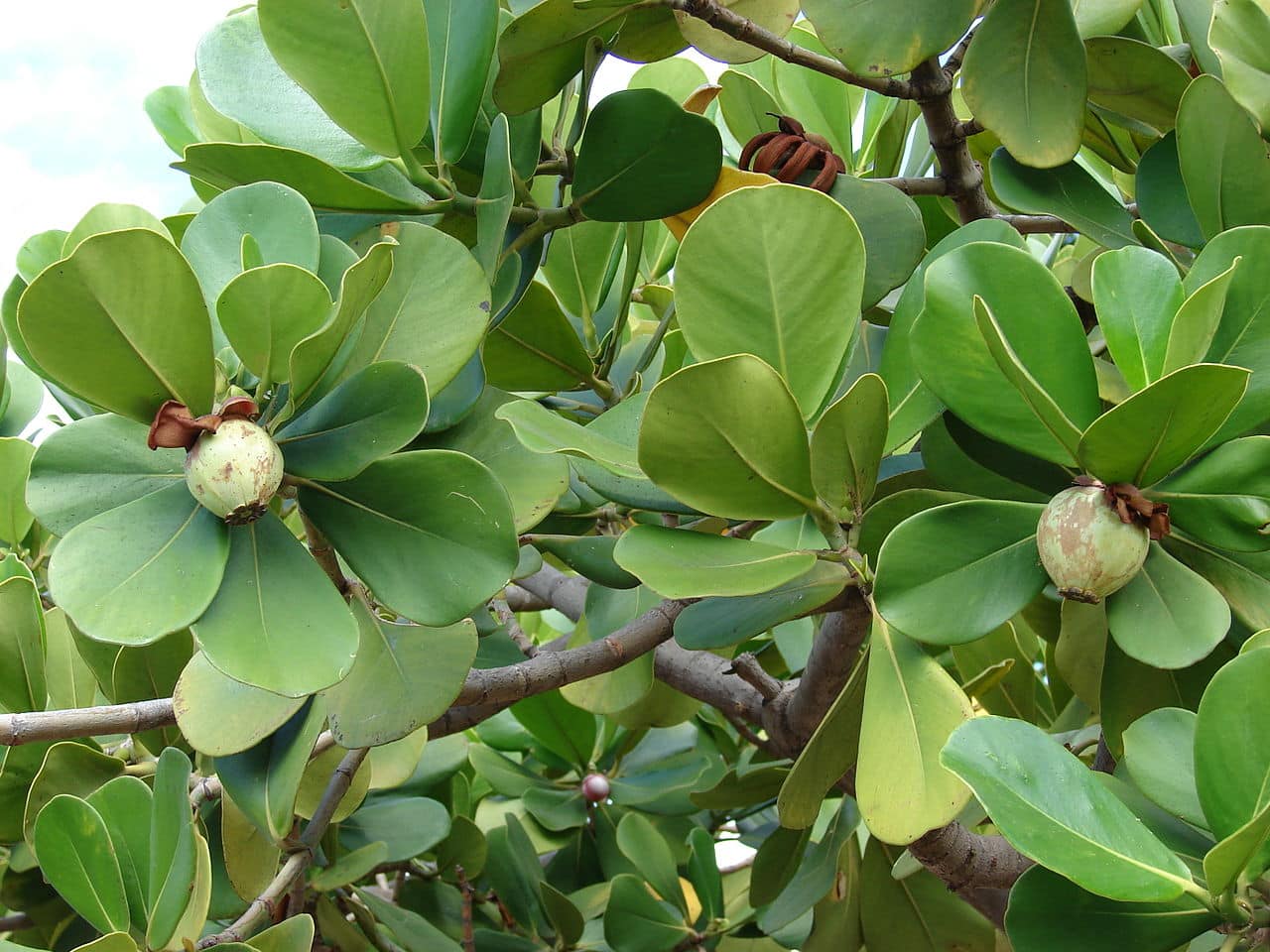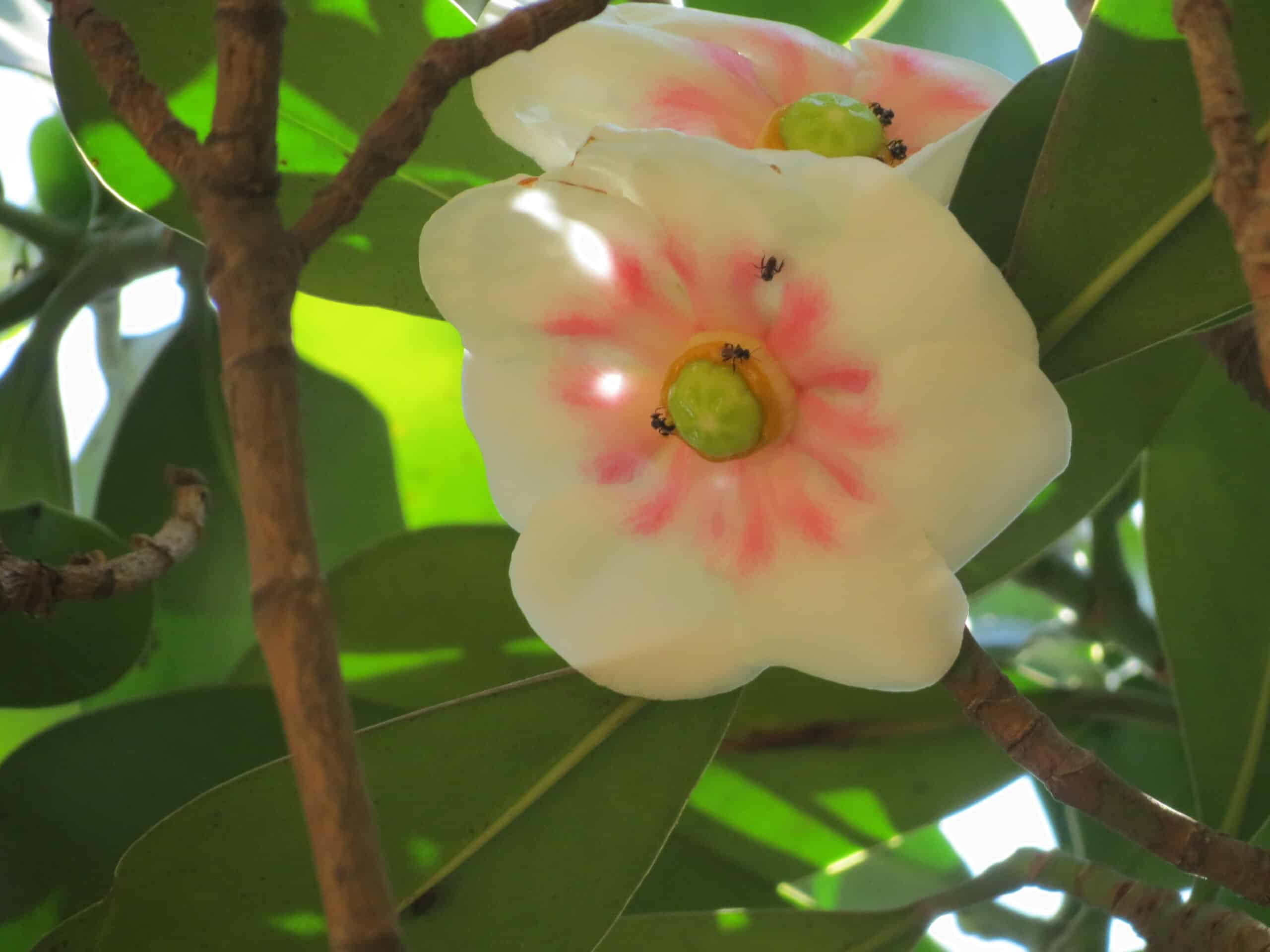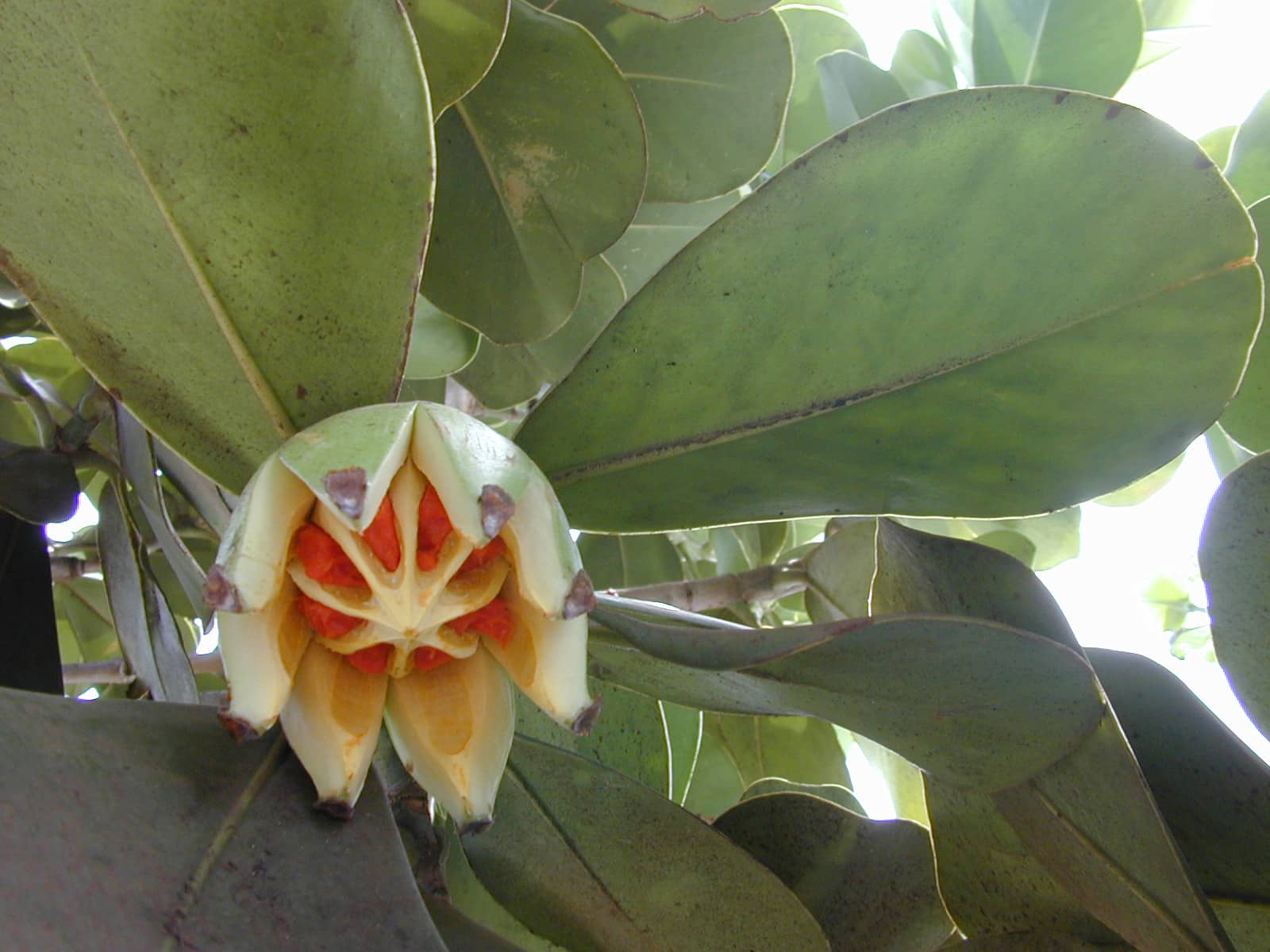
Image - Wikimedia / Forest & Kim Starr
La clusia rosea It is an evergreen tree of tropical origin that, when very young, can be confused with a succulent plant, since its leaves are fleshy. In fact, it is not uncommon for it to be placed alongside cacti and succulents in stores, even though it is not related to them.
From my own experience, I can tell you that its care is not difficultIt can even be indoors if the temperatures are low in winter. But I will talk about this more below.
Where does it originate from? clusia rosea?

Image - Wikimedia / Forest & Kim Starr
It is an endemic tree of the Caribbean, the Bahamas and the West Indies. It is, therefore, a plant that does not know cold, since the lowest temperature is 10-15ºC, and the maximum is 30-35ºC depending on the area. In addition, it grows in places where the environmental humidity is high, which is why it will have problems if it is low, since its leaves will begin to turn brown until they finally fall.
A curious fact is that adapts quite well to living near the sea. This is because it tolerates salt. So if you live on the coast and want to have it outside, you won't have any problem.
What are their characteristics?
La clusia rosea It is an evergreen semi-epiphytic tree. that, depending on the competition that it has, it can grow developing a trunk and a crown strong enough so that they can stand on their own; or as a climber. For example, if we have it as a solitary specimen in the garden, without other large plants nearby, we will see it grow as a common tree; but if, on the contrary, it shares the space with others, then it could tend to develop as an epiphyte.
It can reach a height of approximately 14 meters, but if it is kept in a pot it is difficult for it to exceed 2 meters.. Its trunk remains relatively thin, measuring about 30 centimeters thick at most. The crown is wide, about 6 meters in diameter, and very dense, which is why it casts a very pleasant shadow. It is made up of ovate leaves that are dark green on the upper side and lighter on the underside, and measure about 10×8 centimeters more or less.
Its flowers are white or pink, and measure up to 10 centimeters in diameter. And the fruits are round in shape, and have orange pulp.
How do you take care of clusia rosea?

Image - Wikimedia / Forestowlet
It is a tree that, despite being tropical and therefore very sensitive to cold, is quite easy to care for. To do this, I recommend you take note of what I am going to tell you next:
Location
- If you are going to be inside the house, you must place it in a place where there is a lot of clarity. But be careful: do not put it near the air conditioner or any other device that generates drafts, otherwise its leaves will turn brown.
- if you will be outI recommend putting it in semi-shade. You can get the sun for a few hours early in the morning or at sunset, but you have to make sure that it doesn't hit it during the central hours of the day.
Earth
- Potted: you can fill it with any of these substrates: coconut fiber (for sale here), or universal substrate (for sale here).
- In the garden: The land must be fertile and, in addition, it must have good drainage.
Irrigation
If we talk about irrigation, the first thing to know is that The water used must be either rainwater or water suitable for human consumption. It is also highly advisable to let the soil dry out a bit before watering it again. In this way, the roots will not drown, as there will be no excess water.
But yes, If you are going to have it in a pot, it is important that it has holes, and that if you put a plate under it, you remember to drain it. Likewise, you should not put the plant inside a pot without holes in its base, otherwise the water would stagnate inside it, and the clusia would have a hard time.
Subscriber

Image - Wikimedia / Forest & Kim Starr
During the months when the weather is good and temperatures remain between 15 and 35ºC, you can pay; and in fact it is something that I recommend so that it can grow better. Use liquid fertilizers such as this, since these have a faster effectiveness, but follow the instructions for use that you will find on the package to prevent the roots from 'burning'.
Transplant
You will have to plant the clusia rosea in a larger pot or in the garden if you see that the roots have started to grow out of it. Do it in spring, when temperatures remain above 18ºC.
Rusticity
As we said, it can't stand the cold. Ideally, it should never go below 15ºC., but if it drops to 10ºC temporarily, nothing would happen either.
Did you know this plant?